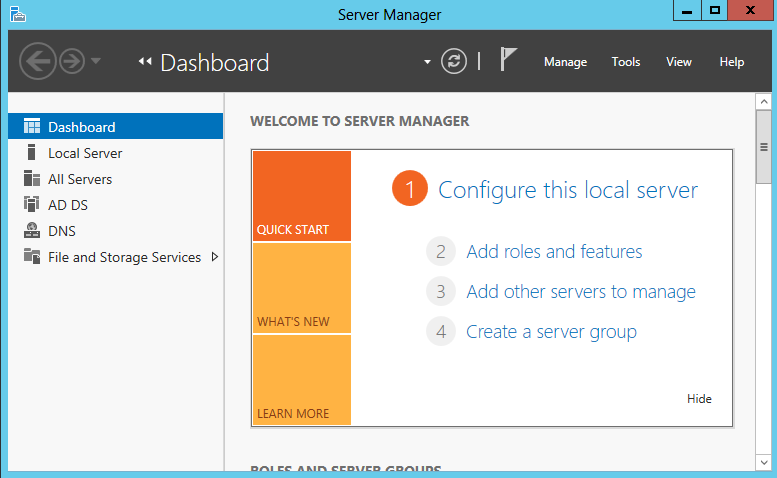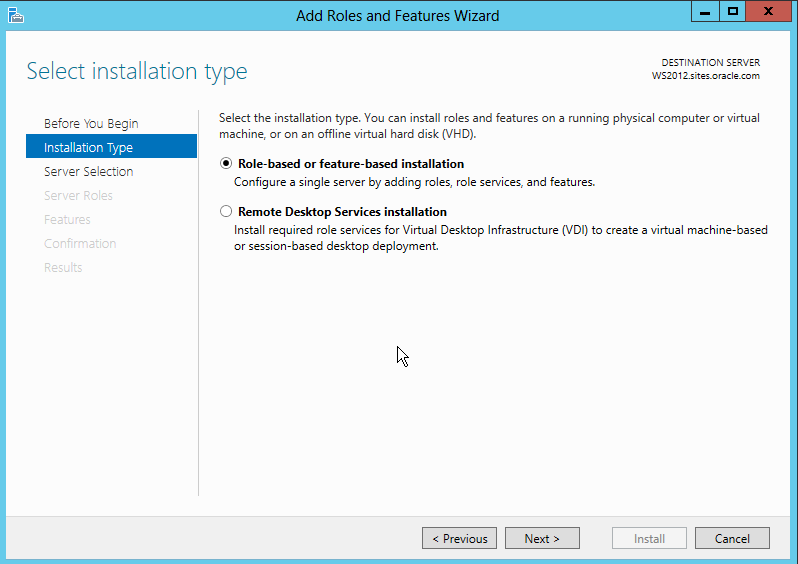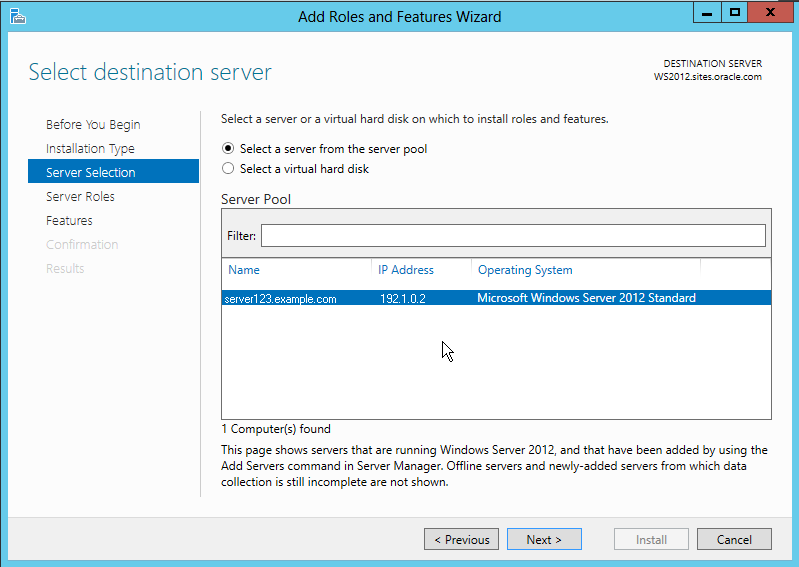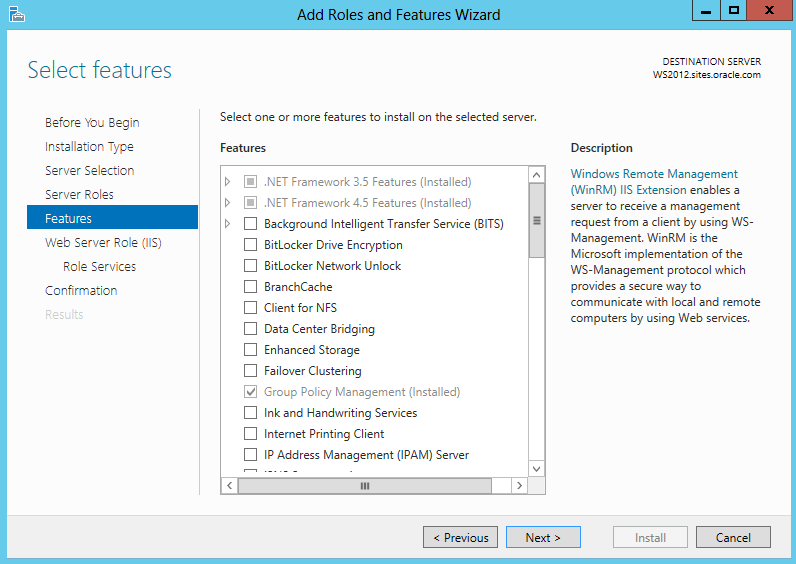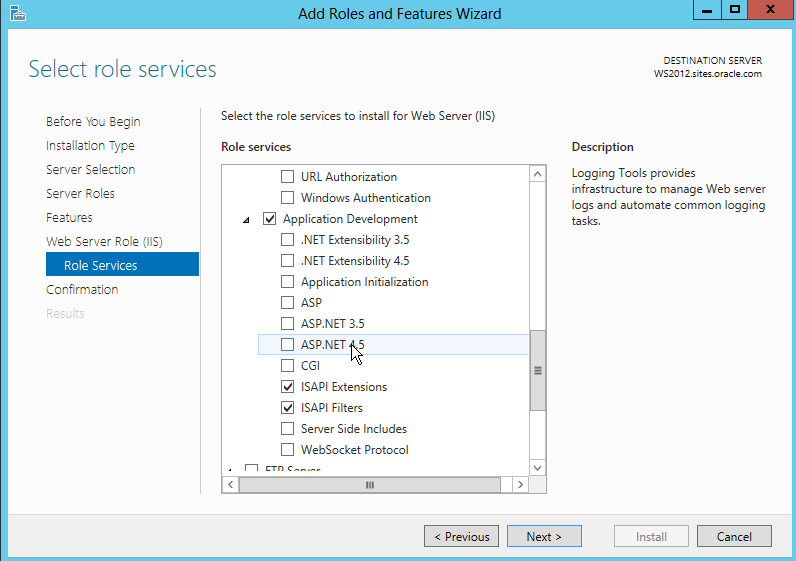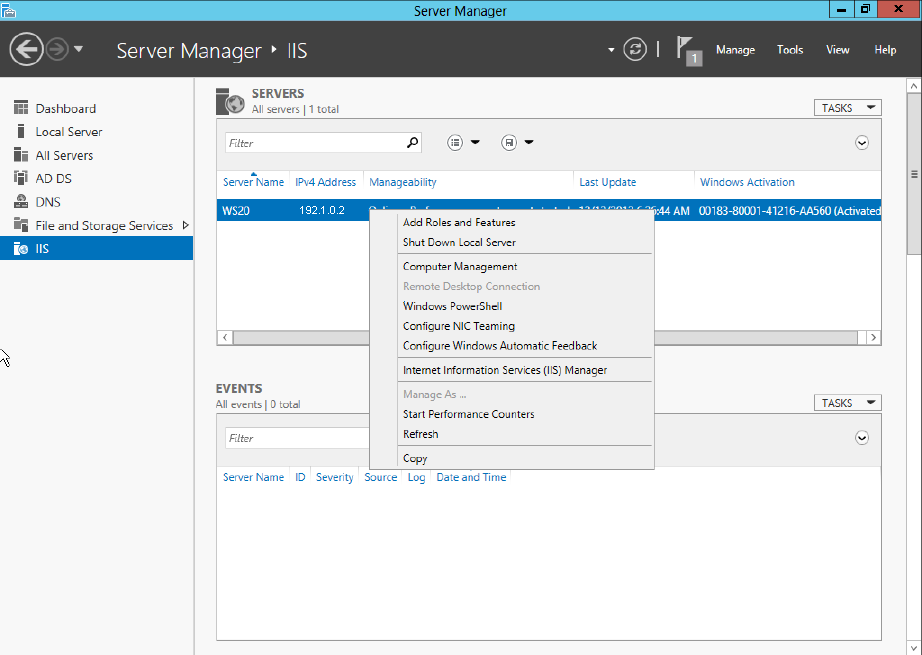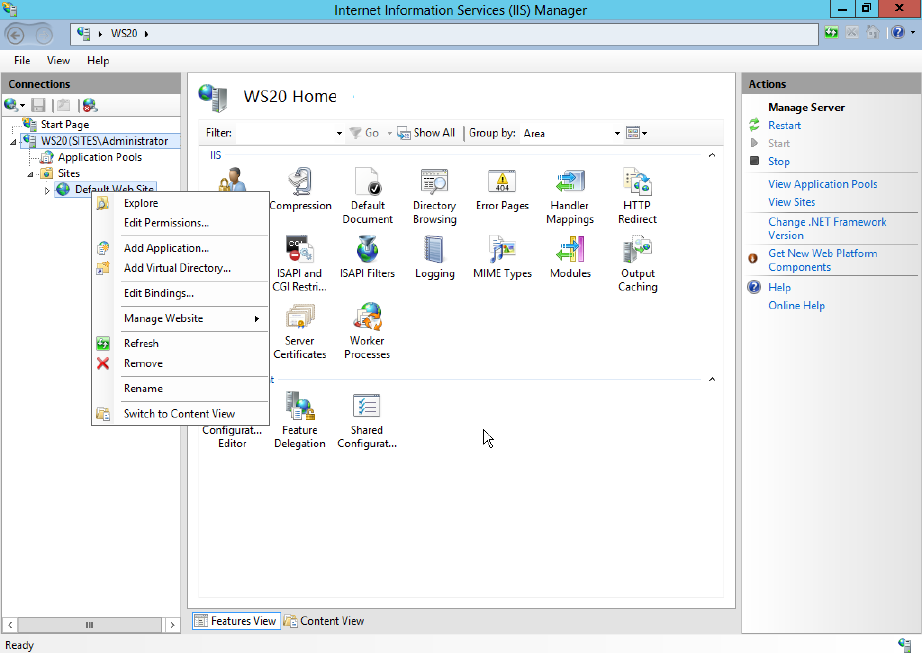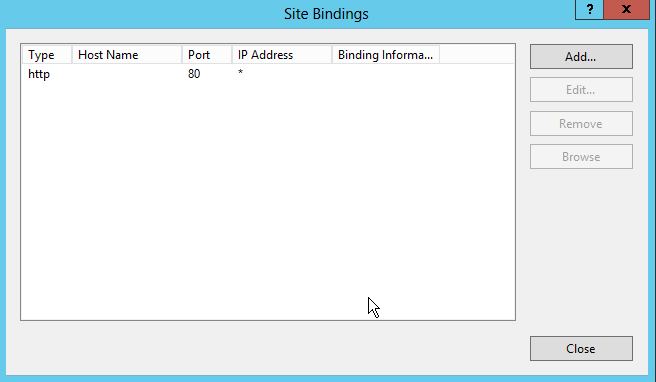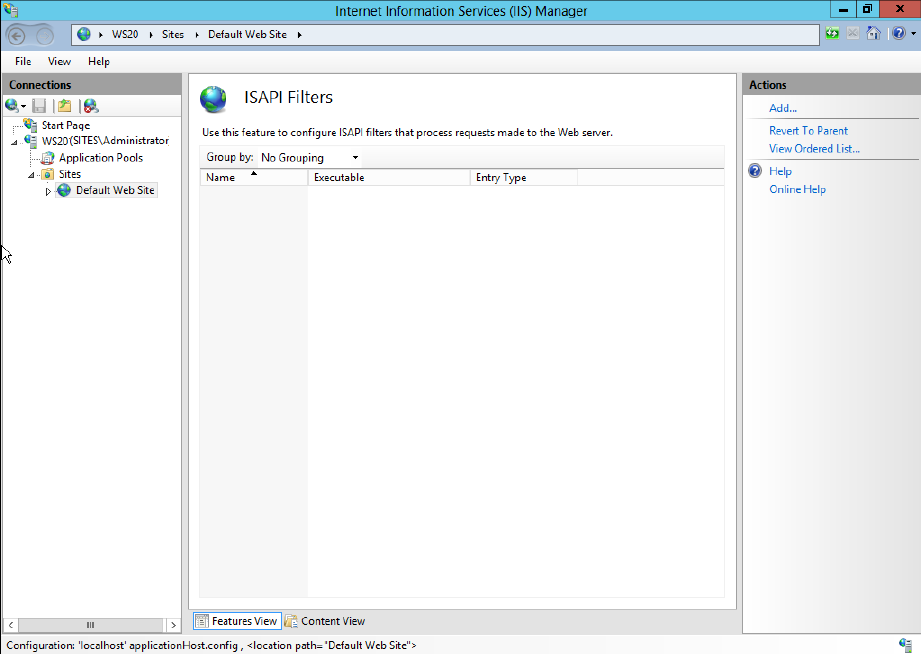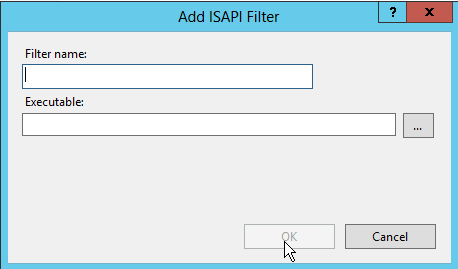11 Installing Microsoft Internet Information Services 8.0 on Windows 2012 Server
This chapter explains how to install and test Microsoft's Internet Information Services (IIS) 8.0 on Windows 2012 Server.
This chapter contains the following sections:
11.1 Installing IIS 8.0
If Internet Information Services is not installed or is only partially installed, follow Microsoft's instruction for installing IIS 8.0 on Windows 2012 Server.
The following is a summary of the instructions:
-
From the "Server Manager," click Add roles and features (Figure 11-1).
-
In the "Before You Begin" screen, click Next.
-
In the "Select installation type" screen, select Role-based or feature-based installation (Figure 11-2) and then click Next.
-
In the "Select destination server" screen (Figure 11-3), select the destination server where IIS will be installed.
-
In the "Server Roles" section, select Web Server IIS.
The "Add Roles and Features Wizard" window opens.
-
In the "Add Roles and Features Wizard" window (Figure 11-4), click Add Features.
Figure 11-4 Add Roles and Features Wizard

Description of ''Figure 11-4 Add Roles and Features Wizard''
-
In the "Select features" screen (Figure 11-5), click Next.
-
In the "Role Services" screen (Figure 11-6), ensure that the following are selected:
-
Common HTTP Features
-
HTTP Redirection
-
-
Health and Diagnostics
-
HTTP Logging
-
-
Application Development
-
ISAPI Extensions
-
ISAPI Filters
-
-
Management Tools
-
IIS Management Console
-
-
-
Confirm you selection (Figure 11-7) and click Install to complete the installation.
Figure 11-7 Confirm Installation Selections

Description of ''Figure 11-7 Confirm Installation Selections''
11.2 Verifying the Installation
After installing IIS, verify the installation to determine whether IIS is serving pages properly. Test the installed IIS from the server hosting it as well as from another browser on the network.
To verify that IIS is serving pages
-
Start a browser on the host that IIS is running on.
-
From the browser, go to the following URL:
http://localhost/IIS is installed and running if the browser displays the "IIS 8" page (Figure 11-8).
11.3 Starting and Configuring IIS 8.0
This section contains instructions on the following:
11.3.1 Starting and Configuring IIS Manager
-
From the "Server Manager" dashboard, select your IIS server.
-
Right-click your server's name and then click the Internet Information Service (IIS) Manager (Figure 11-9).
The IIS Manager opens (Figure 11-10).
Figure 11-10 Internet Information Services (IIS) Manager
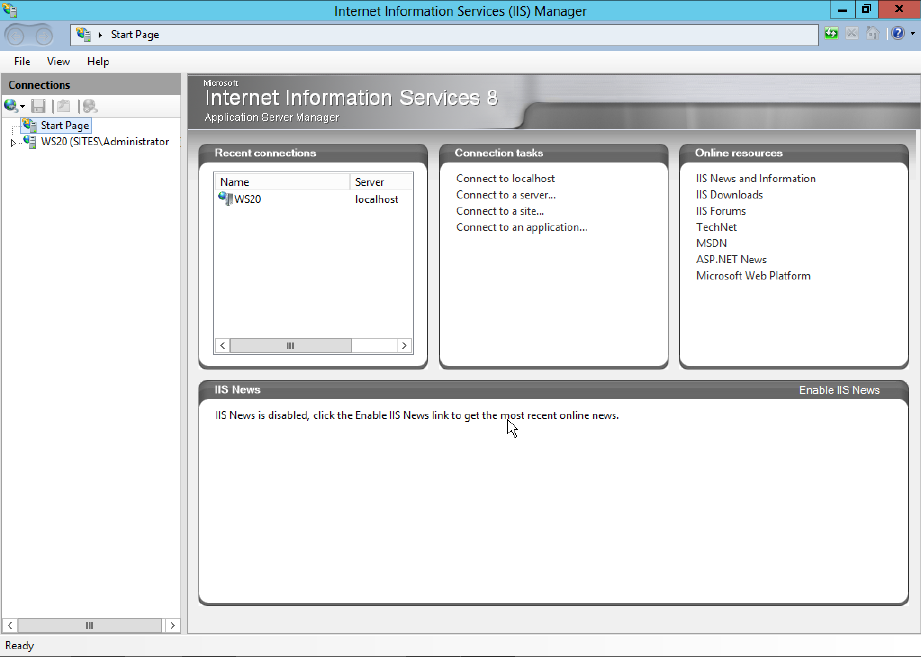
Description of ''Figure 11-10 Internet Information Services (IIS) Manager''
11.3.2 Changing the IIS Port
-
Open the "Management Console" and browser to the Default Web Site.
-
Right-click the Default Web Site entry (Figure 11-11) and select Edit Bindings.
-
In the "Site Bindings" dialog box (Figure 11-12), you can add or change the ports and IP address on the server IIS will bind.
-
After all the desired changes have been made, click Close.
11.3.3 Adding a New ISAPI Filter
-
Open the "Management Console" and browser to the Default Web Site.
-
In the center list, click ISAPI Filters and then click Add (Figure 11-13).
The "Add ASAPI Filter" dialog box opens (Figure 11-14).
-
In the "Add ISAPI Filter" dialog box, fill in the following fields:
-
Filter Name – Enter a filter name.
-
Executable – Enter the location of the executable file.
The new filter is added to the "ISAPI Filters" list.
-
11.4 Proxing Using IIS 8.0
-
Open the "Management Console" and browser to the Default Web Site.
-
In the center list, click HTTP Redirect.
-
In the center panel of the "Internet Information Services (IIS) Manager (Figure 11-15)," do the following:
-
Select the Redirect requests to this destination option.
-
In the text field (directly under the Redirect requests to this destination option), enter the location of the remote server (include the context root for WebCenter Sites or Satellite Server).
-
Click Apply.
-
